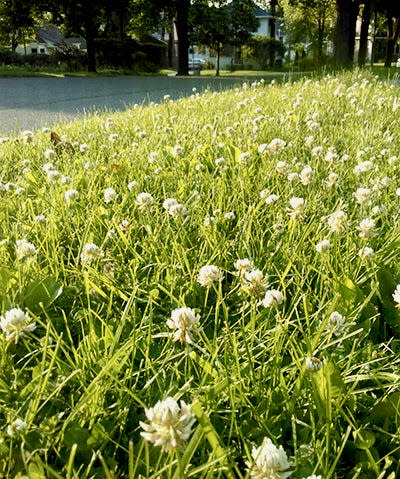MiSustainable Holland: Shamrocks bring good luck to your lawn and environment
HOLLAND — As the month of March comes to an end, the shamrock decorations are stored away, waiting for display next March to recognize St. Patrick’s Day. Shamrocks are also a reminder that the lush greens of spring are right around the corner.
When rain falls at the beginning of April, we know our lawns and landscapes will soon be vivid and bright, as everything begins to thrive after the cold winter. But then, summer inevitably comes and our once-lush lawns turn a crunchy brown — unless gallons upon gallons of water are used to keep them green.

But those bright green shamrocks of March just might be a way to solve this problem. White clover, which is considered a shamrock, makes for the perfect lawn alternative for anyone wanting to maintain a greener lawn throughout the summer or pursue a more sustainable lawn option.
One reason clover lawns are more sustainable than traditional turf is because clover requires much less water. Turf grass has very shallow roots compared to clover, which means it requires more watering. In the summer, an average grass lawn uses over 125 gallons of water each time it's watered. Clover lawns, on the other hand, rarely need to be watered at all.
Clover is also a sustainable lawn alternative because it promotes healthy pollinator populations. Clover flowers are one of the most important food sources for urban pollinators throughout the summer season, so by replacing a grass lawn with a clover lawn, pollinators can thrive.
Another benefit: With a traditional lawn, you probably have to mow on a weekly or biweekly basis. Each time a lawn is mowed and the grass clippings aren’t removed from hard surfaces, the grass clippings can wash into nearby storm drains and wind up in waterways.

In those waterways, they release phosphorus, which causes intense algal blooms. These algal blooms decrease the amount of oxygen in our waterways, and cause fish and other wildlife to die off.
Clover lawns don’t need to be mowed nearly as often as traditional lawns, so planting a clover lawn can help limit the algal blooms from high phosphorus levels.
If replacing turf grass with clover isn't an option, other practices can be implemented to promote sustainability. Consider reducing the use of fertilizers by properly measuring or omitting them. Additionally, try watering only in the early morning, mowing grass no shorter than three inches and cleaning up grass clippings.
Another way to have a flourishing but sustainable lawn is to plant native plants or practice rainscaping. Like clover, native plants rarely need to be watered, promote native pollinator populations, and don’t need to be mowed.
Subscribe:Receive unlimited digital access to your local news coverage
Learn more about our local rainscaping program or sign up for a free site assessment at the-macc.org/rainscaping.
The lush green of the spring can last all summer by pursuing more sustainable practices when it comes to lawn care. Planting white clover as a lawn alternative, practicing rainscaping or even mindfully maintaining your turf lawn are all important ways to conserve water, protect pollinators and decrease water pollution.
— Sydney Quillian is a watershed intern with the ODC Network.
About This SeriesTMiSustainable Holland is a collection of community voices sharing updates about local sustainability initiatives. This Week’s Sustainability Framework Theme: Environmental Awareness/Action: Environmental education and integrating environmental practices into our planning will change negative outcomes of the past and improve our future.
This article originally appeared on The Holland Sentinel: MiSustainable Holland: Shamrocks bring good luck to lawns, environment
